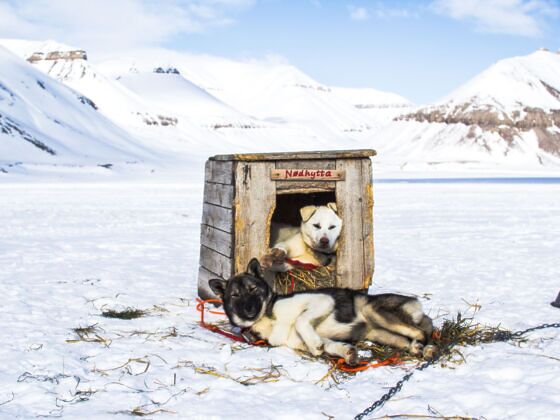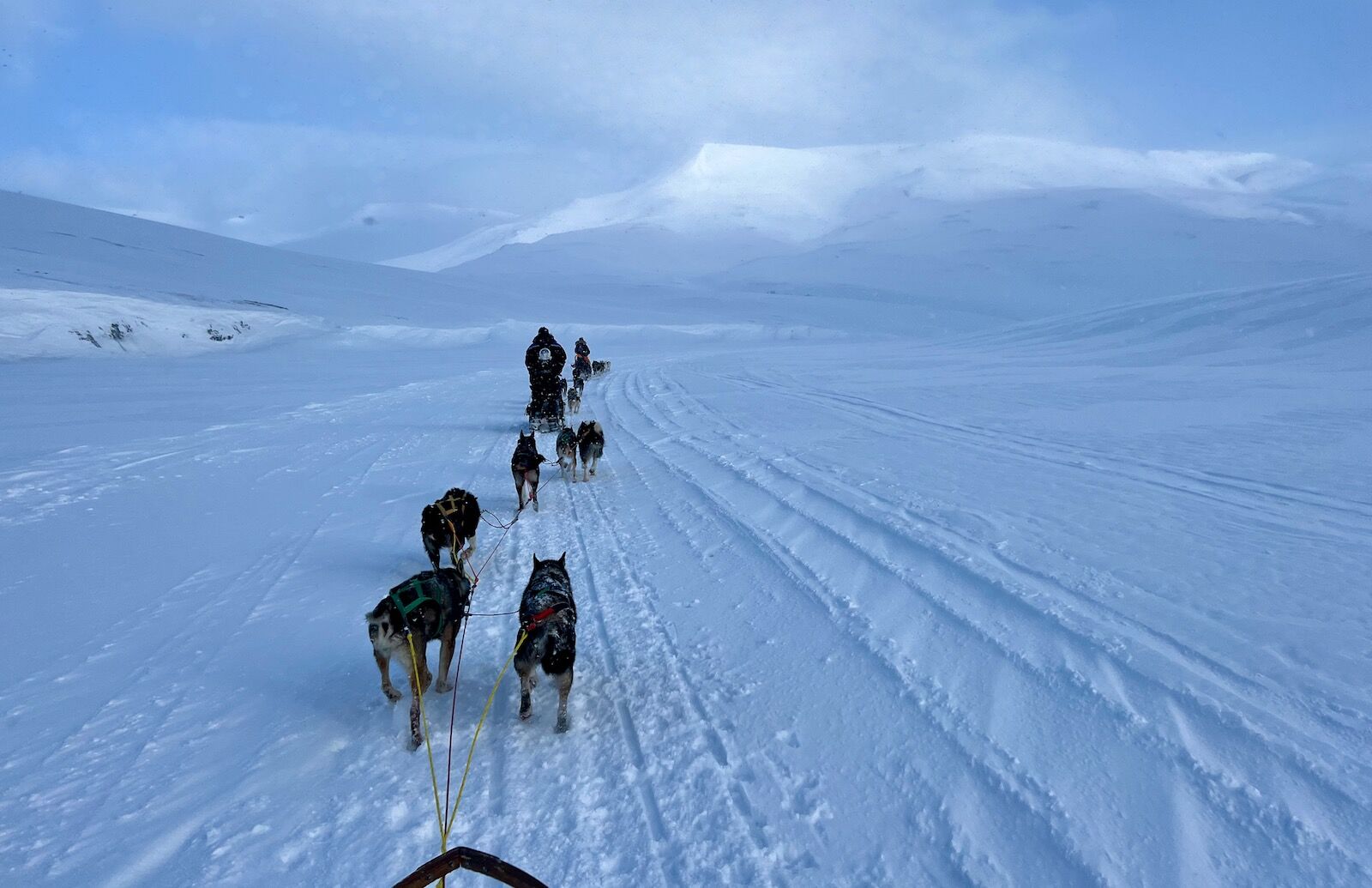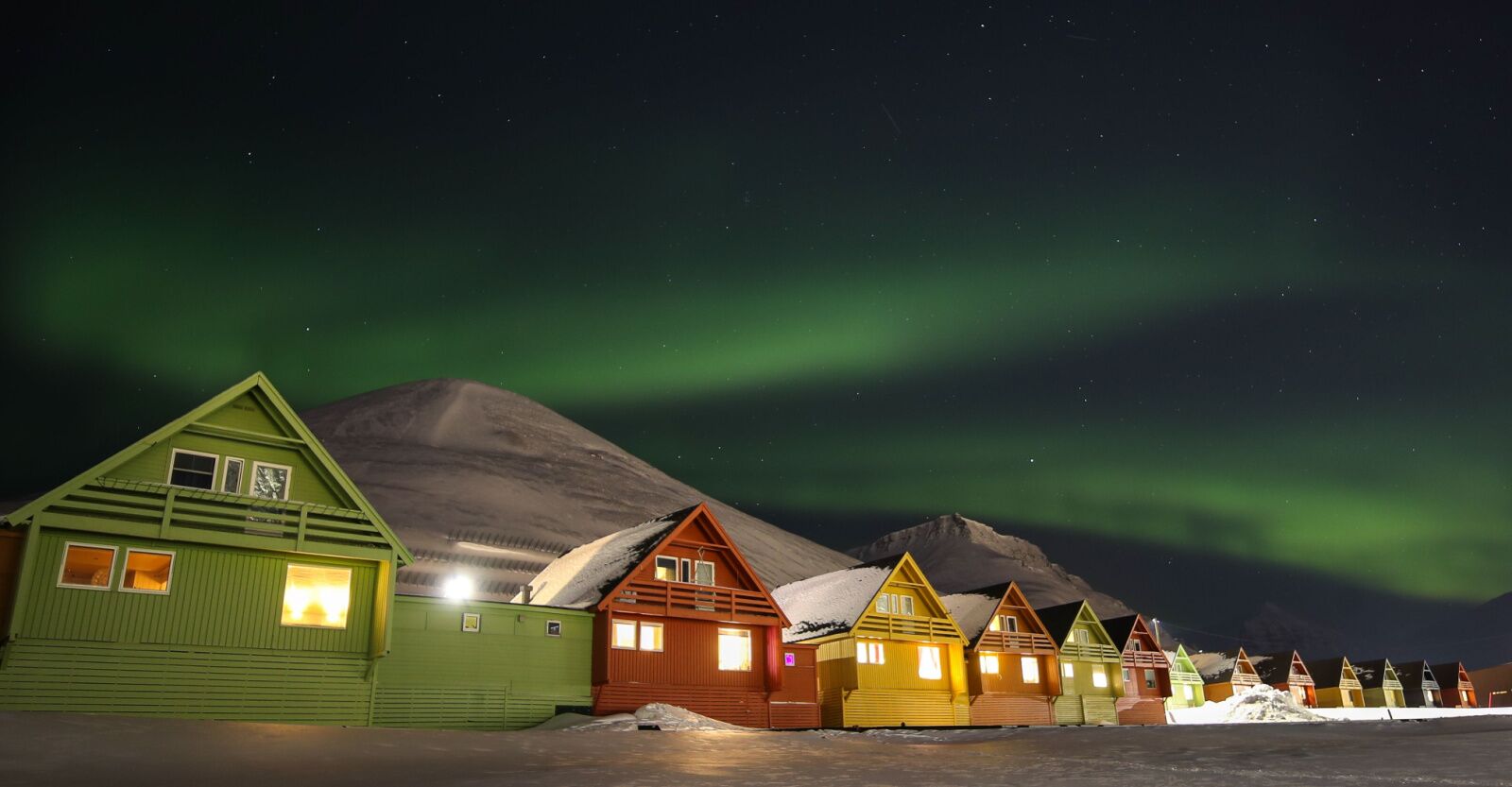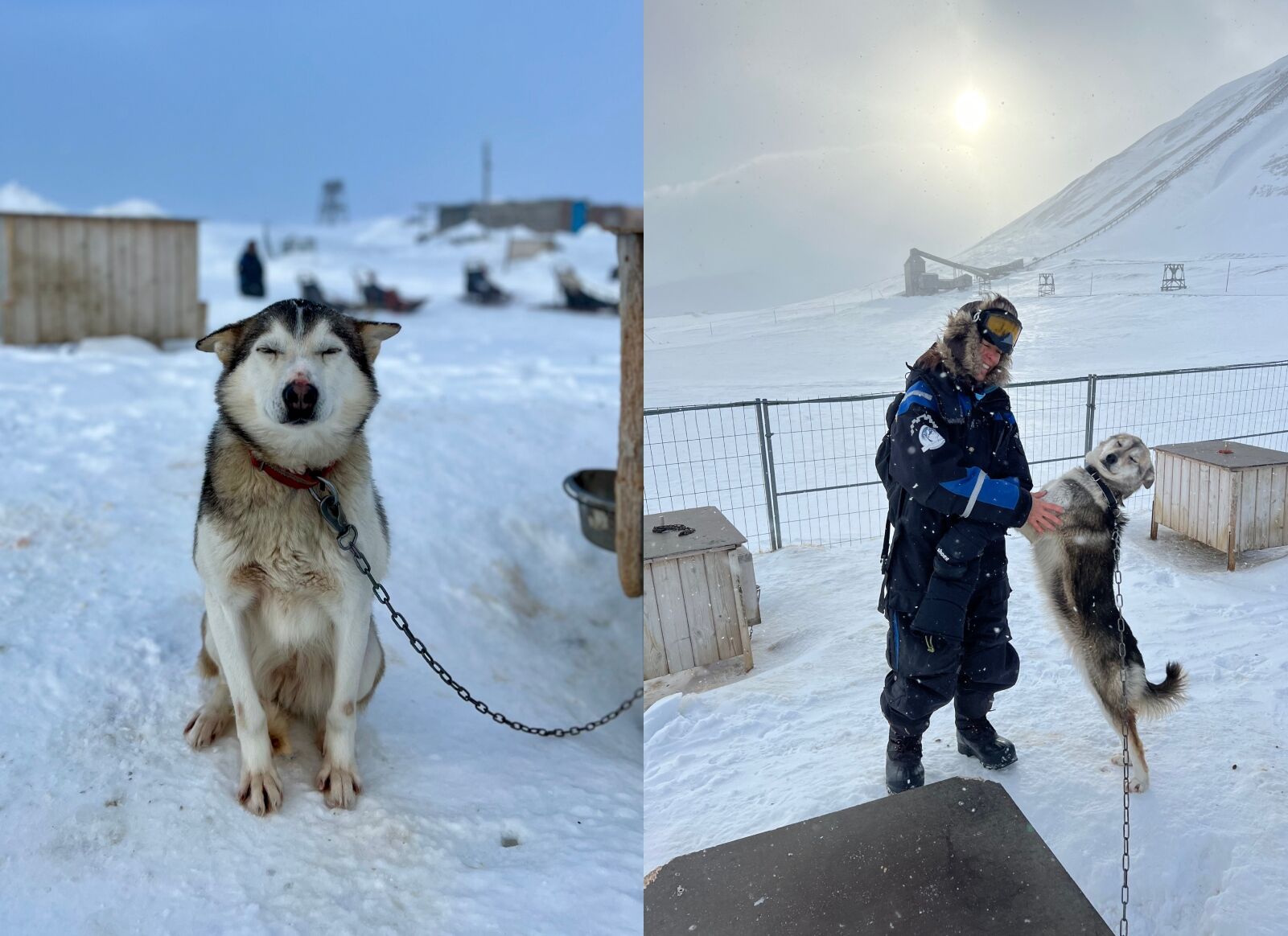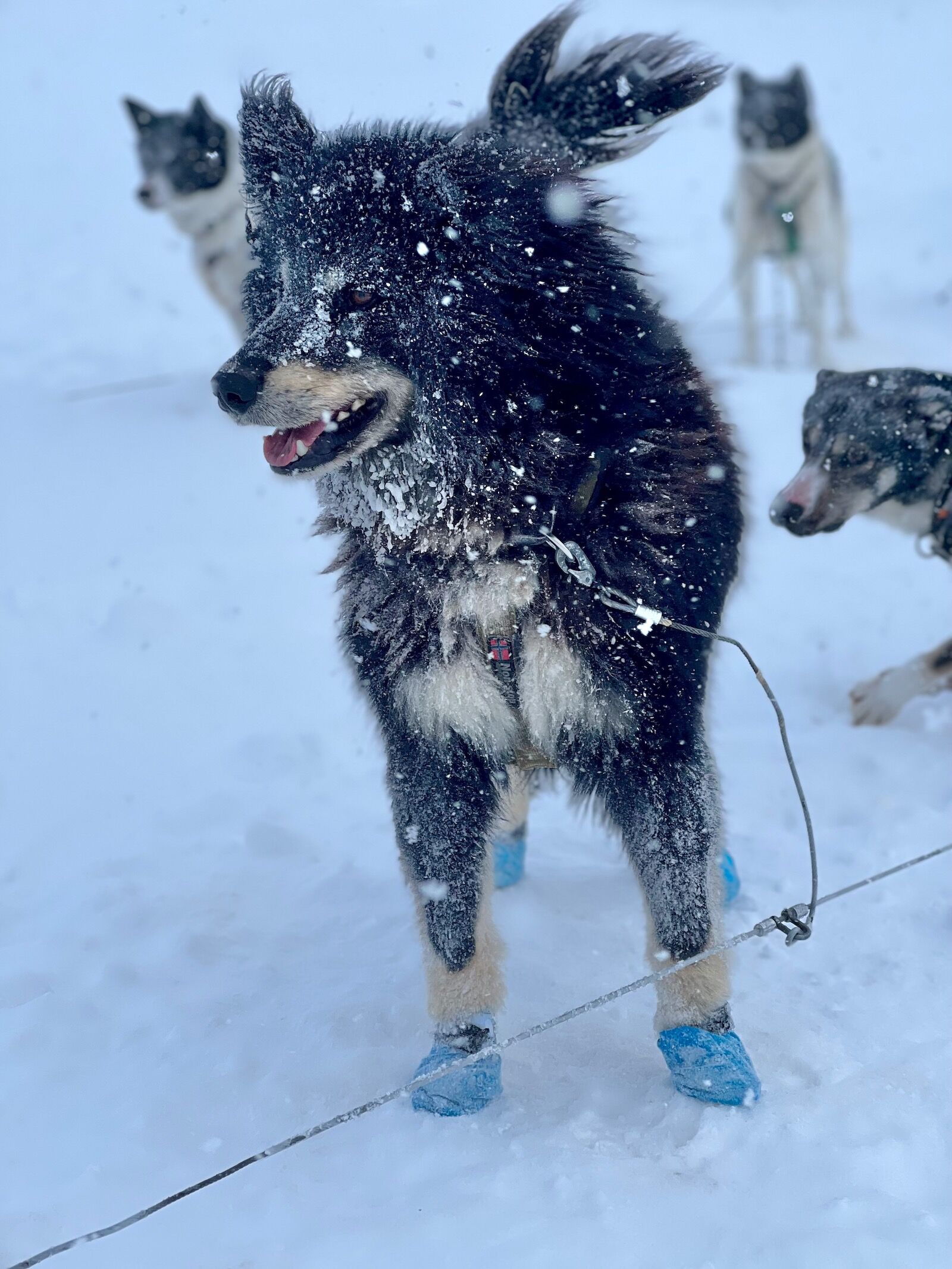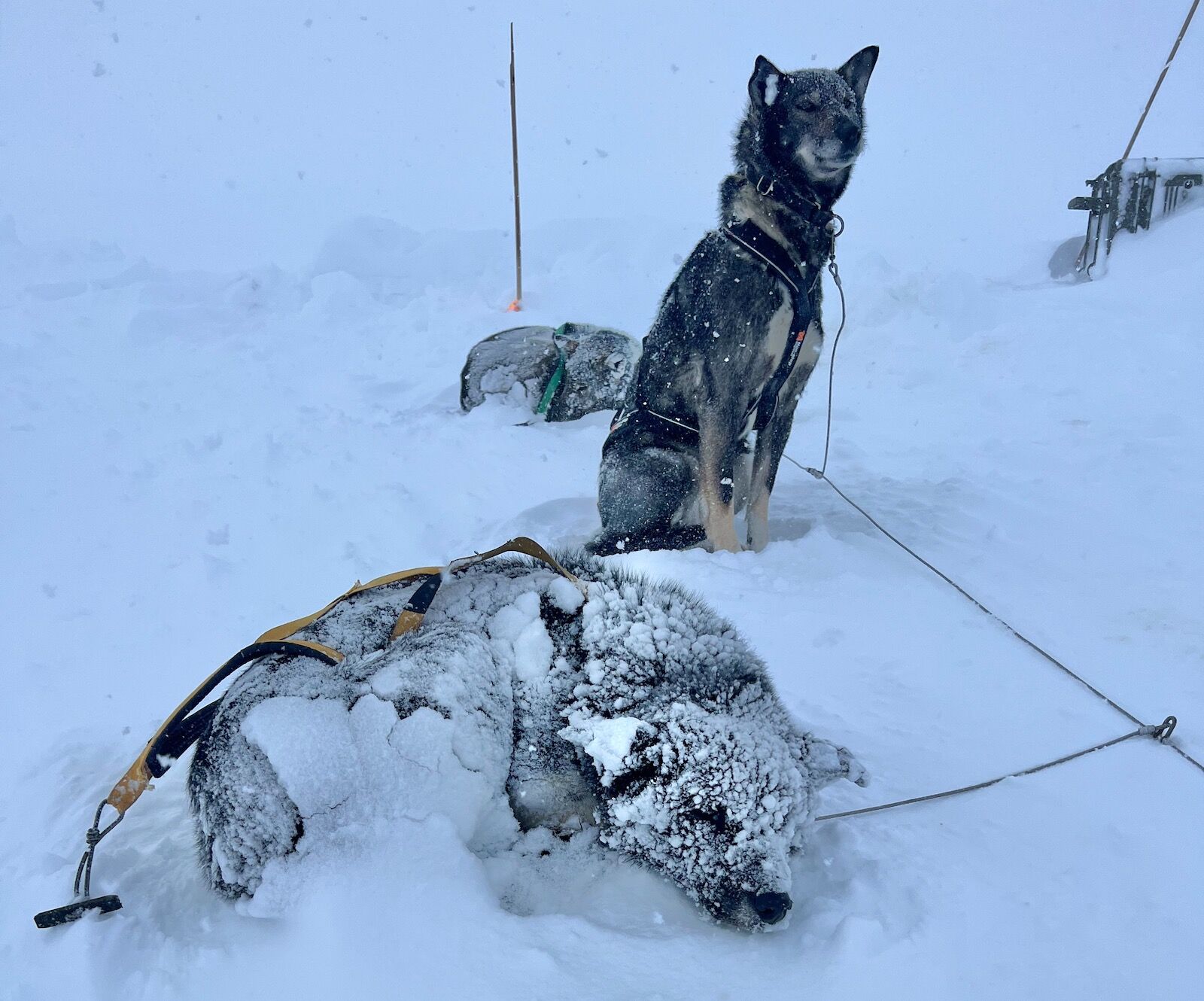I stood on the back of a dogsled, becoming a musher for the day as I glided across the lonely, chalk-white landscape in near silence, the sled skimming over freshly fallen snow. The six dogs harnessed to the gangline in front of me sprinted with a mesmerizing fervor, surprisingly hushed in their exertion.
Two hours earlier, it had sounded much different. When they were first harnessed and tethered to the sleds, the dogs barked riotously. The sleds were anchored to the snow, and the dogs were jumping in place, tugging at the sled to announce their excitement. But the moment the sleds were free to move, the dogs quieted and began their focused, forward thrust over the ice.
